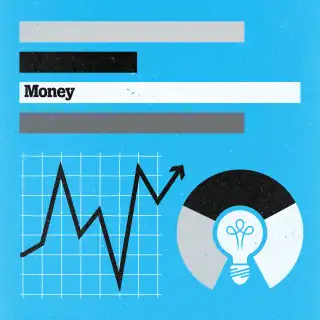3 Simple Ways to Build a Low-Risk Portfolio

Q: My 89-year-old father has $750,000 after selling his Medtronic stock and paying capital gains. He'd like to make a low-risk investment with easy accessibility, but one that would give him more than a savings account. Any suggestions? — Karen
A: Before your father gets too focused on where he should reinvest the proceeds of this sale, it’s important to ask how this fits into the bigger picture of his finances, says Shari Burns, a chartered financial analyst and managing director with United Capital in Seattle.
Given the current state of the bond market — interest rates are very low but poised to move higher this year, which would threaten the value of older bonds — there is no simple answer for making a low-risk investment that is easily accessible and that pays more than just a savings account.
“Preserving principal is one priority, and getting a better return than a savings account is another,” says Burns, noting that any time you look for additional reward, you’re taking on additional risk.
With that in mind, your father needs to think about his priorities and his timeline. Let’s consider three scenarios:
Scenario # 1: He needs all the proceeds of the stock sale to support his cost of living.
Under this scenario, he should start with how much he needs and for roughly how many years. Working backwards will help him determine the right balance of risk and reward.
In simplistic terms, his $750,000 translates to $75,000 in annual income for the next 10 years. To keep up with inflation and preserve capital consider a mix of cash and individual bonds.
Burns suggests keeping $250,000 in a savings account to draw on over the next few years. “If short-term rates go up, then the interest on the savings account will rise,” she says.
Your dad can then invest the remaining $500,000 in a laddered bond portfolio of individual Treasury securities. A simple way to build such a "ladder" is to divide that money equally among Treasuries maturing in two-year increments, starting with 2-year notes and going out to 10-year securities.
At current rates, those Treasuries are paying out 0.72%, 1.29%, 1.74%, 2.07% and 2.33% respectively. So combined, this $500,000 ladder will average 1.63% per year or $8,140 in annual income for the first few years.
“As you spend down the savings account, you will replenish your cash as bonds mature in the years that remain,” she says. “After 10 years your portfolio will be depleted.” It’s important to point out that because your father is holding these bonds to maturity, rising rates aren’t a concern.
Scenario #2: He doesn’t need the additional income but will rest easy knowing it’s safe.
Under the second scenario — which we’ll venture to say is the most likely based on the size of this single holding – he will probably want to keep about 70% to 75% of these funds in cash and a short-term bond fund, such as the Vanguard Short-Term Bond Index .
The remaining 25% to 30% should go to a low-cost stock fund, such as the Schwab S&P 500 Index fund or the Vanguard Total World Stock Index fund . “The stock portion of the portfolio will provide growth over time, which will keep the total portfolio ahead of inflation,” she says. Because neither the bond market nor the stock market are exactly cheap, however, it makes sense to dollar-cost average into these portfolios over the next six months to a year.
Scenario #3: He wants to preserve wealth to eventually pass this on to his heirs or charity.
Finally, if your father is more focused on long-term wealth preservation, he may want to rethink his goal and invest for the long term, she says. “He will want the capital to rise faster than inflation to maintain the purchasing power of his wealth,” she says. Use the same approach described above, only plan to bring the equity portion up to 50% to 60% of this segment of the portfolio.
Read next: The Low-Risk, High-Reward Way to Buy Your First Investment Property